Power Technology lists the world’s ten biggest nuclear energy-producing countries, based on installed capacity.
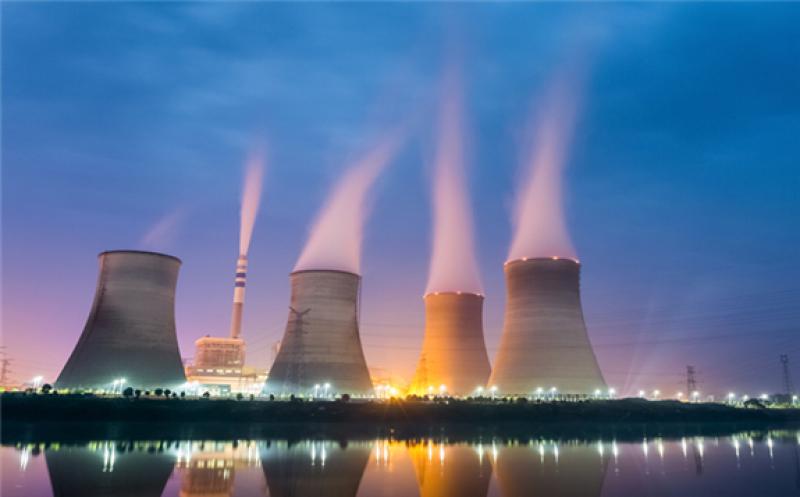
The world’s biggest energy-producing countries: Top ten by nuclear capacity
United States – 98.2GW
France – 63.1GW
China – 47.5GW
Japan – 32GW
Russia – 28.5GW
South Korea – 23.2GW
Canada – 13.6GW
Ukraine – 13.1GW
United Kingdom – 8.9GW
Sweden – 7.7GW
1. United States
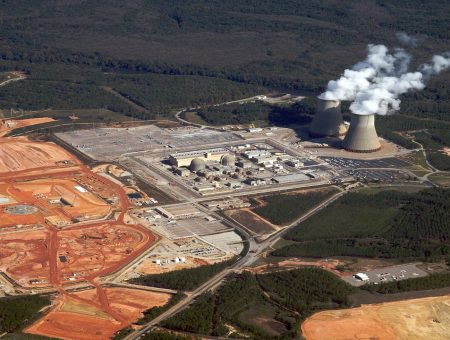 The US has 96 operable nuclear reactors across 30 states operated by 30 different power companies. Credit: Charles C Watson Jr.
The US has 96 operable nuclear reactors across 30 states operated by 30 different power companies. Credit: Charles C Watson Jr.
The United States (US) has a total installed nuclear capacity of 98.2GW from 96 reactors in operation across 30 states and by 30 different power companies.
The US produced 809TWh of nuclear energy in 2019 that represented more than 30% of global nuclear energy production.
Nuclear energy, however, caters to just 20% of the country’s electricity consumption. The country relies more on natural gas and coal for power generation.
Two new nuclear reactor units, Vogtle 3 and 4 with Westinghouse AP1000 reactors, are under construction in Georgia, due to be commissioned in 2021 and 2022, respectively.
Two old reactors, Indian Point 2 and Duane Arnold with a combined capacity of 1.5GW were shut down in 2020.
2. France
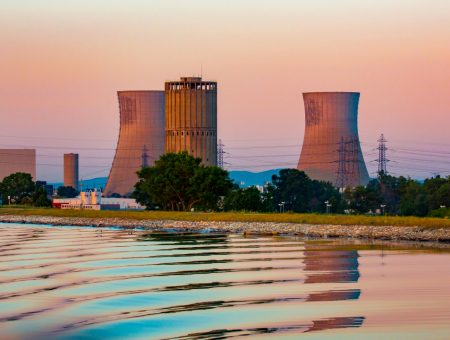 France produces approximately 70% of the electricity it consumes from nuclear energy, the highest in the world. Credit: Bob Pool/Shutterstock.
France produces approximately 70% of the electricity it consumes from nuclear energy, the highest in the world. Credit: Bob Pool/Shutterstock.
France has 58 operating reactors with a combined net capacity of 63.1GW, while a new nuclear reactor, Flamanville 3 with 1,650MW capacity, is under construction.
Nuclear reactors in France generated 382.4TWh of electricity in 2019. The country generates roughly 70% of its electricity from nuclear energy, the highest share of nuclear power in total power production.
France generates approximately 17% of the electricity from recycled nuclear fuel. Low production costs make it the world’s largest net exporter of nuclear energy. Its oldest nuclear power plant Fessenheim’s two units, Fessenheim 1 and Fessenheim 2, were shut down in 2020 due to environmental concerns.
The French government plans to reduce nuclear’s share in its electricity mix to 50% by 2035 by increasing renewable power generation.
3. China
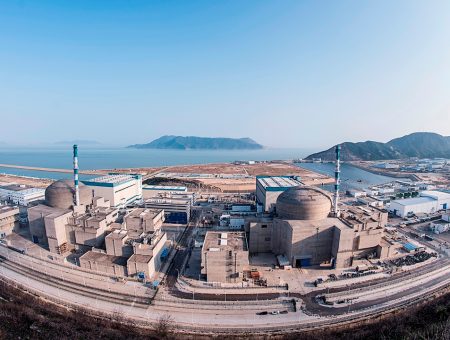 Taishan nuclear power plant in Guangdong, China, features two EPR reactors, which are third-generation PWR reactors. Credit: EDF Energy.
Taishan nuclear power plant in Guangdong, China, features two EPR reactors, which are third-generation PWR reactors. Credit: EDF Energy.
Net installed capacity of 47.5GW makes China the third biggest nuclear energy-producing country in the world. The country’s total nuclear power production was 330.1TWh in 2019.
Nuclear energy share in China was approximately 5% in 2019, an increase of 18% year-on-year.
Nuclear power development in China is gaining momentum due to increasing air pollution by coal-fired plants and the nation’s plans to employ a closed nuclear fuel cycle.
China currently has 49 operational nuclear reactors, while 16 reactors with a combined net capacity of 15.9GW are under construction. Further, the construction of 39 nuclear reactors with a combined gross capacity of 43GW has been planned, with the construction of a few such as Xudabao units 1 and 2, Sanmen units 3 and 4, and Changjiang 3 and 4 expected to be started in 2021.
4. Japan
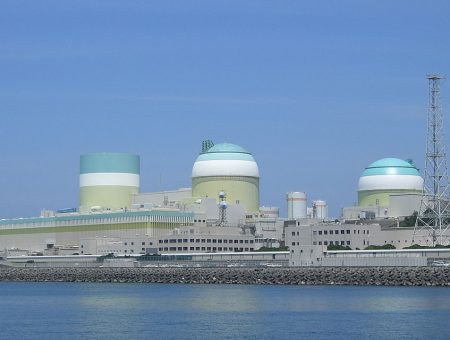 Ikata nuclear power plant on Shikoku Island, Japan, is owned and operated by Shikoku Electric Power Company. Credit: Newsliner.
Ikata nuclear power plant on Shikoku Island, Japan, is owned and operated by Shikoku Electric Power Company. Credit: Newsliner.
Japan has 33 nuclear reactors in operation with a net installed capacity of approximately 32GW, while two reactors (Ohma 1 and Shimane 3) with a net capacity of 2.6GW are under construction.
Japan produced 65.7TWh of nuclear electricity in 2019. Japan was deriving approximately 30% of its energy requirement from nuclear energy prior to the Fukushima Daiichi nuclear accident in March 2011 and was then the world’s third-largest nuclear power consumer after the US and France. All the nuclear reactors were, however, removed from service following the accident because of which the nuclear energy share dwindled to zero in 2013 and stayed there for two years.
Japan depends on imports for approximately 90% of its energy requirements. The nuclear energy share of the country gradually increased to 7.5% in 2019 and is expected to increase further with the potential restart of several nuclear facilities over the coming years.
5. Russia
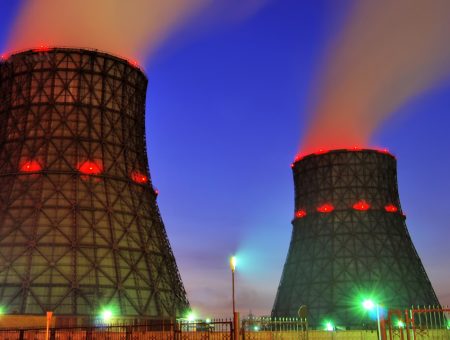 Russia has 38 nuclear reactors in operation with a combined 28.5GW net capacity. Credit: Silverkblackstock/Shutterstock.
Russia has 38 nuclear reactors in operation with a combined 28.5GW net capacity. Credit: Silverkblackstock/Shutterstock.
Russia has 38 operating reactors with a combined net capacity of 28.5GW, while two reactors (Kursk II-1 and Kursk II-2) integrating VVER-TOI/V-510 reactors with a combined 2.3GW net capacity are under construction.
Russia produced 195.5TWh of nuclear energy, which accounted for approximately 19.7% of its total electricity generated in 2019.
Russia has emerged as a world leader in fast neutron reactor technology and is steadily expanding its nuclear energy capacity. ROSATOM State Atomic Energy Corporation’s Proryv Project aims to achieve a new quality of nuclear energy with closed nuclear fuel cycle based on fast reactors for its industrial implementation on large scale.
The nation retired Unit 2 of the Leningrad 1 reactor in 2020.
6. South Korea
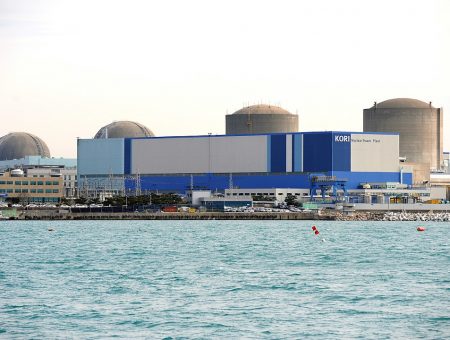 Kori nuclear power plant in South Korea is one of the biggest operating nuclear power plants in the world by capacity. Credit: IAEA Imagebank/ Korea Kori NPP.
Kori nuclear power plant in South Korea is one of the biggest operating nuclear power plants in the world by capacity. Credit: IAEA Imagebank/ Korea Kori NPP.
South Korea has 24 nuclear reactors in operation, with a combined 23.2GW capacity. Most of its reactors are located in the south-eastern part of the country, near the cities of Gyeongju, Ulsan, and Busan. The densely populated region is the major hub of electricity demand as it houses several heavy manufacturing plants.
South Korea generated 139TWh of nuclear energy in 2019, becoming the sixth biggest nuclear energy-producing country in the world. The country derived 26% of its total electricity from nuclear energy in 2019.
The nation has four nuclear reactors (Shin Hanul 1 and 2 and Shin Kori 5 and 6) under construction with a combined 5.3GW net capacity.
7. Canada
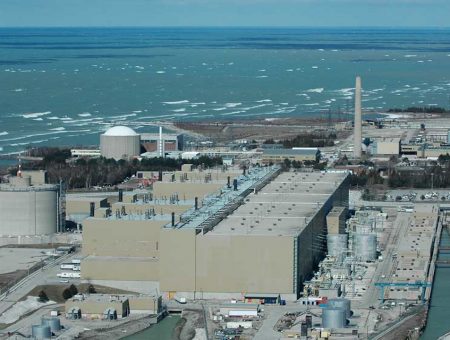 All the nuclear power plants in Canada feature Canadian Deuterium-Uranium (CANDU) reactors. Credit: Chuck Szmurlo.
All the nuclear power plants in Canada feature Canadian Deuterium-Uranium (CANDU) reactors. Credit: Chuck Szmurlo.
Canada has four nuclear power plants with a total of 19 nuclear reactors in operation with a 13.6GW net installed capacity, most of them located in Ontario.
The country generated 94.9TWh of nuclear energy in 2019, which accounted for 14.9% of the country’s total power generation.
All the nuclear power plants in Canada feature Canadian Deuterium-Uranium (CANDU) reactors, which are pressurised heavy water reactors that utilise natural uranium as fuel and heavy water as a coolant and moderator.
8. Ukraine
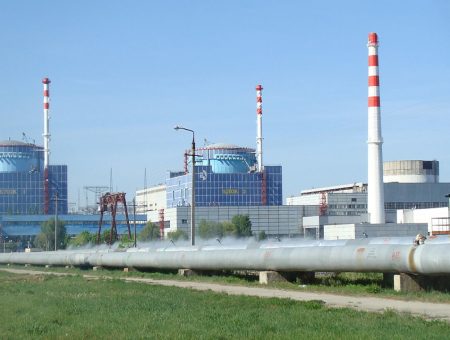 Khmelnytskyi nuclear power plant in Ukraine features VVER-1000 reactors. Credit: RLuts.
Khmelnytskyi nuclear power plant in Ukraine features VVER-1000 reactors. Credit: RLuts.
Ukraine has 15 operable nuclear reactors with a combined net installed capacity of 13.1GW, while two reactors (Khmelnitski 3 and 4) are under construction with pressurised heavy water reactors providing a 2GW net capacity.
Ukraine produced 78.1TWh of nuclear energy in 2019, which accounted for 53.9% of the total electricity produced in the country.
The country is highly dependent on nuclear energy and receives most of its nuclear fuel and services from Russia. It is proactively purchasing fuel from Westinghouse, a company based in the US, to reduce its dependence on Russia.
9. United Kingdom
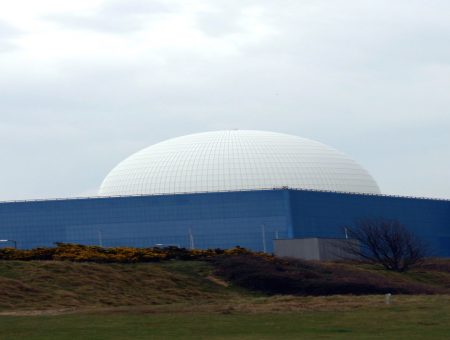 The UK has a combined net capacity of 8.9GW with 15 operable nuclear reactors. Credit: John Brodrick.
The UK has a combined net capacity of 8.9GW with 15 operable nuclear reactors. Credit: John Brodrick.
The UK has a combined net nuclear energy capacity of 8.9GW with 15 operable nuclear reactors. It generated 51TWh of nuclear energy in 2019, which was 15.6% of the country’s total electricity output.
Approximately half of the country’s existing nuclear power reactors will be retired by 2035. The UK is constructing two reactors (Hinkley Point C1 and Hinkley Point C2) with a combined capacity of 3.3GW, which will generate 7% of the country’s current electricity requirements. It also plans to build other new nuclear power stations such as the Sizewell C in Suffolk.
10. Sweden
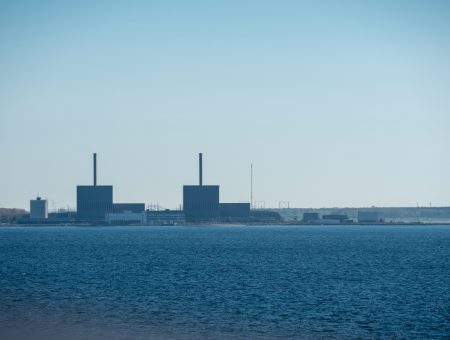 Sweden has seven operational nuclear reactors with 7.7GW of combined net capacity. Credit: Shaggyphoto/Shutterstock.
Sweden has seven operational nuclear reactors with 7.7GW of combined net capacity. Credit: Shaggyphoto/Shutterstock.
Sweden has seven nuclear reactors in operation with a 7.7GW combined installed capacity and closed four older reactors with a combined net capacity of 2.7GW by 2020, in line with decisions made in 2015.
The 64.4TWh of nuclear energy produced in Sweden in 2019 accounted for approximately 34% of its total electricity output.
The country currently has no plans to expand its nuclear capacity by building new reactors. It entirely relies on nuclear fuel imports due to a uranium mining ban implemented through an amendment to the Swedish Environmental Code in August 2018.